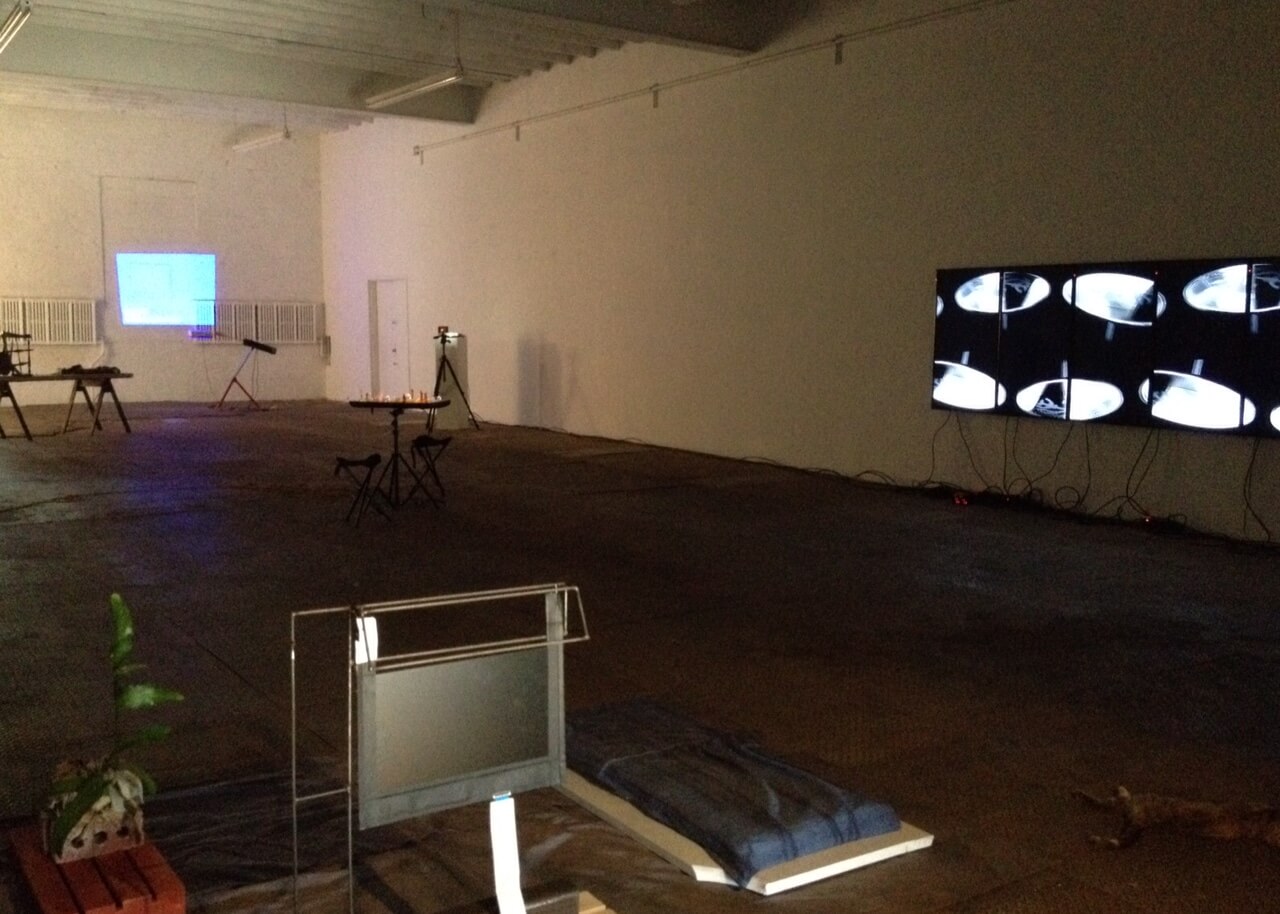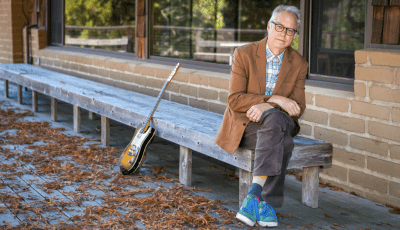Screw You: Surface Support
To visit Surface Support, a group exhibition of a meta-mixed-media sort currently on view at Signal Gallery (through August 9th), is to enter a large, mostly dark room, and to be greeted by a rather aesthetically fragmented suite of objects whose carnivalesque cacophonies—visual as well as acoustic—seem to share the common function of shooing you away. Which is to say, they don’t really greet you. Which is to suggest, they don’t really need you. Which might make you wonder if you, the viewer, have been rendered, by the context and content of an art exhibit, quite nearly if not completely beside the point. To wit, it’s a wonderful feeling.
Meta-mixed-media? Well, the objects scattered about the room, described quite aptly by curator Amanda Schmitt as “sculptural video works” brought together to display “a collision between virtual reality and objecthood,” feature aspects of sculpture, video, photography, sound art, and variable sorts and modes of installation, but most all of them evade effective encapsulation by breaching the basic boundaries of such singular descriptors. This is likely what might make you, as the viewer—or better, as the viewing interloper—feel somewhat put-off or ill-at-ease, but it’s also what makes all the pieces, both individually and collectively, all the more alluring. And once one of them lures you all the way in, you’re screwed—for your time, your resting heart rate, your ocular calm, your pupils’ dilatory inertia, your comfort with our standard dimensions of experience, your senses of diurnal awareness, your possible love of the outdoors—and you’ll find yourself eventually feeling, rather than shooed away, quite firmly stuck in place. The stretch of six large monitors, for instance, displaying a diptych-like version of Philip Vanderhyden’s three-channel Head and Shoulders Pattern 2, might well mesmerize you into gazing at several circuits of its ten-minute loop, which will give you plenty of time to consider that its mixedly pristine, bejeweled, overtly decadent, financially connotational images—sequenced into so many vignette-like segments and sub-segments occasionally broken up by slot-machine-like blurs into digital oblivion—make it both an affirmative take-down and a soaring apotheosis of excess, avarice, superfluous luxuries, limitless wealth, outsized everything, rampant capitalism, the luck and non-luck of life as such, the dream and nightmare of it all. Should you, too, consider Vanderhyden’s piece thusly, you might also agree that it’s exactly the kind of piece that the CEO of some large commercial bank or hedge fund might love to add to a personal or corporate collection—but only if the piece is supremely expensive, and only if the artist who made it is supremely, kindredly rich. (Cue wringing hands, echoes of greedy laughter.)
Fittingly or not, Vanderhyden’s piece is silent. Fittingly indeed, the rest of the show is generally not, and it is perhaps the draw of so many ambient soundscapes, amusingly confounding with all their acoustic overlap, that pulls you along from one piece to the next. Meriem Bennani’s iButt, for example, a well-humored send-up of smartphones and brand-o-philia, features a bootylicious Apple logo doing a haunchy jig to a rump-shaking tune, while Jessie Stead’s Runaway Interludes, a cleverly game-board-like display of player-suggestive objects atop a varicolorfully animated monitor-cum-table, emits differently diverting noises nearby. In their sonic midst, you are both player and pawn in a realm of confused controls. In Luca Dellaverson’s sculpturally, cinematographically, pop-culturally subversive piece, a flood of acoustics is basically all you get as five monitors, stacked one atop the other in a unified lean-to, and all turned turned away from you, run videos of five differently clamorous Hollywood blockbusters all at once—Jurassic Park, Independence Day, Home Alone 2: Lost in New York, and 10 Things I Hate About You—giving quite literal meaning to the expression ‘wall of sound’ while driving you basically nuts.
A few other pieces, meanwhile, indulge in quietude. Meticulously mounted projections by Will Stewart and Kyle Williams are pensive, meditative, slow, and they force you to figure out how, or from where, you should be viewing them while whisking you away into distant elsewheres. Dan Herschlein’s The Already Tasted Thing, a tabled mix of busted and seemingly discarded items, implies that something, here, for someone, has gone woefully wrong, and that an ultimate price has perhaps been paid, while Lea Cetera’s Aluminum Scraps, a small yet completely captivating hologram nearby, makes you wonder if something is woefully wrong with your eyes. Backing up to the notion of being screwed as the viewer—puns pending—one piece in particular, Antoine Catala’s Projector On a Swing, could actually do that to you, since one of its components is, in fact, a “fucking machine.” It likely won’t, though, since it’s a bit too perpetually busied performing its hilariously inane, totally Sisyphean task of gently nudging a projector—whose projection consists of basically nothing but its operatively default blueness—back and forth with a silicone hand. The piece is a consummate visual joke, and most humorously existentially relevant insofar as its constituent parts refute one another’s presumed utilities. Yet in the light of those very utilities, the piece is also, in a way, pornography, or at least a functional metaphor for the same, although it features no actors, no narrative, no sex, no nudity, no funky soundtrack, no titillating imagery. What it features in full, however, is unerringly repetitive visio-material fuckery.
To visit Surface Support is to enter a large, mostly dark room, to initially wonder what the hell is going on with all the objects around you, and to gradually be coaxed into engaging with each and every one of them. It is also to be confused, amused, annoyed and brought to your knees. It might indeed mess with your senses, sensibilities and circadian rhythms in many ways, but it’s well worth giving in and letting it screw you.
You might also like 




















